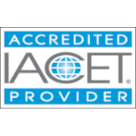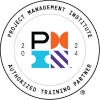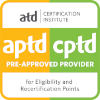Product Details
Topics Covered
- Laws and authorities
- Whole Community approach
- Incident Command System
- Emergency Operations Center
- Emergency program management
- Mitigation
- Hazard analysis
- Preparedness
- Emergency operations plan
- Training and exercises
- Debris removal
- Response & recovery
- Presidential Disaster Declaration process
- Assistance
Key Features
- Mobile-friendly
- Audio-enabled
- Badge and credit-awarding
- Real-world case studies
- Fully accessible
- Games & Flashcards
- Expert-supported
- Video content
Course Preview
Course Description
Learning Outcomes
- Define emergency management, explain the principles of emergency management, and recognize the various roles and responsibilities of emergency managers
- Identify the laws, authorities, and structures that shape and define emergency management in the U.S.
- Explain the purpose of an emergency operations center (EOC) and describe how and when to activate the EOC
- Recognize the components of a successful emergency management program, including financial planning, resource management, and exercise program management
- Describe the components of a mitigation plan and recognize how mitigation actions can prevent emergencies or minimize the resulting damages
- Identify the six steps of planning and outline an emergency operations plan
- Distinguish between the various types of training and exercises
- Recognize the key partners in response and their various roles and responsibilities, such as communicating with the public, saving lives, and clearing debris
- Explain the purpose and goal of recovery and identify the short-term and long-term activities that facilitate recovery
- Outline the steps in the Presidential Disaster Declaration process and identify the various kinds of assistance available to emergency managers
Notes
This course has an "Ask the Expert" feature, which submits your questions directly to an expert in the field you are studying. Questions are answered as quickly as possible and usually within 24 hours.
As an Accredited Provider, MindEdge offers for its learning events that comply with the Continuing Education and Training Standard.
Learners must achieve an average test score of at least 70% to meet the minimum successful completion requirement and qualify to receive credit. Learners will have three attempts at all graded assessments.
Project Management Institute, , the Registered Education Provider logo, Project Management Professional, , Project Management Body of Knowledge, , Agile Certified Practitioner, -, Risk Management Professional, -, the Talent Triangle, and the Talent Triangle logo are marks of the Project Management Institute, Inc.
Information in this course has been taken from A Guide to the Project Management Body of Knowledge, (® Guide) - Sixth Edition, Project Management Institute Inc., 2017.
The following list outlines the you will earn for completing this course, based on the certifications you have.
CAPM®/PMP®/PgMP® |
|---|
| Ways of Working PDUs: 5 |
| Power Skills PDUs: 3 |
| Business Acumen PDUs: 2 |
| TOTAL: 10 |
PfMP® |
|---|
| Ways of Working PDUs: 0 |
| Power Skills PDUs: 3 |
| Business Acumen PDUs: 2 |
| TOTAL: 5 |
PMI-ACP® |
|---|
| Ways of Working PDUs: 0 |
| Power Skills PDUs: 3 |
| Business Acumen PDUs: 2 |
| TOTAL: 5 |
PMI-PBA® |
|---|
| Ways of Working PDUs: 0 |
| Power Skills PDUs: 3 |
| Business Acumen PDUs: 2 |
| TOTAL: 5 |
PMI-RMP® |
|---|
| Ways of Working PDUs: 3 |
| Power Skills PDUs: 3 |
| Business Acumen PDUs: 2 |
| TOTAL: 8 |
PMI-SP® |
|---|
| Ways of Working PDUs: 0.5 |
| Power Skills PDUs: 3 |
| Business Acumen PDUs: 2 |
| TOTAL: 5.5 |


